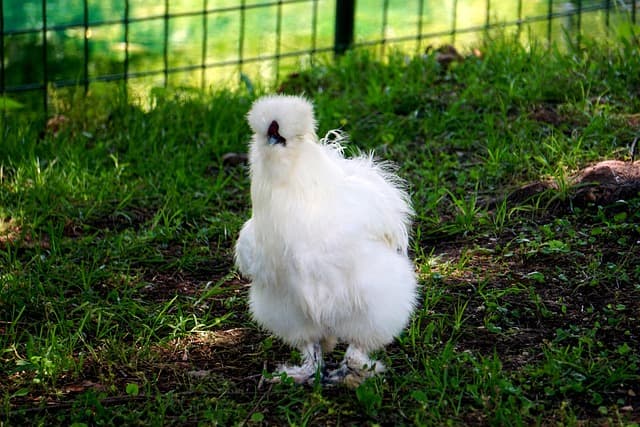
Silkies: Fluffy Chickens with Unique Genetics
Apr 27, 2025 • Chicken Breeds • 6 minute read
Silkie chickens are instantly recognizable thanks to their soft, fur-like feathers and gentle personalities. But beyond their appearance lies a fascinating genetic makeup that sets them apart from other breeds. In this article, we explore what makes Silkies so special—from their unique feather structure to their unusual skin color and more.
The Distinctive Look of a Silkie
Silkies stand out for their fluffy, silk-like plumage that lacks the usual barbicels found in standard feathers. This gives them a soft, furred look more like a rabbit than a typical chicken.
They often have a rounded body shape, a short beak, and feathered legs and feet. Some Silkies also display a crest of feathers on top of the head, adding to their charming and ornamental appearance.
This distinctive appearance is not only beautiful but also the result of unique genetic mutations that affect feather development and pigmentation.

A Closer Look at Silkie Genetics
One of the most unique genetic traits in Silkies is fibromelanosis. This condition causes hyperpigmentation, leading to black skin, bones, and even organs. It is a rare trait found in only a few chicken breeds worldwide.
Silkies also have an autosomal mutation responsible for their silky feather texture. This mutation prevents feather barbs from hooking together, resulting in loose and fluffy plumage that does not repel water well.
Other Traits That Make Silkies Unusual
Most chickens have four toes, but Silkies have five. This trait, known as polydactyly, is another distinguishing feature linked to their genetic uniqueness.
Silkies also tend to be more docile and friendly than many other breeds. Their calm nature makes them excellent pets, especially for children or those new to chicken keeping.
Their small size and ornamental appearance mean they are often used in exhibitions or kept by breeders as show birds.

Raising Silkies in the Backyard Flock
Silkies are easy to care for, but their delicate feathers require some attention. Because their feathers are not waterproof, they should be kept dry and out of heavy rain or snow.
They do well in coops with gentle companions and are not ideal for mixed flocks with aggressive breeds. Providing soft bedding and clean living conditions will help maintain their health and feather quality.
Why Silkies Are Popular Around the World
Silkies are beloved not only for their looks but also for their temperament. They make devoted mothers, often going broody and raising chicks with care and patience.
In many cultures, their black skin is considered a delicacy and believed to have medicinal properties. As a result, they are valued both as ornamental birds and in traditional cuisine.
They also adapt well to both rural and urban environments, making them a favorite in backyard coops.
Whether kept for eggs, companionship, or exhibition, Silkies continue to charm poultry enthusiasts all over the world.

The Endearing Appeal of Silkie Chickens
Silkies are one of the most unique and adored chicken breeds. From their fluffy appearance to their kind temperament and fascinating genetics, they offer a truly special experience for keepers and breeders alike.
Their traits may require a bit of extra care, but their personality and beauty make them well worth the effort. Whether you are new to chickens or a seasoned enthusiast, Silkies are sure to leave a lasting impression.




